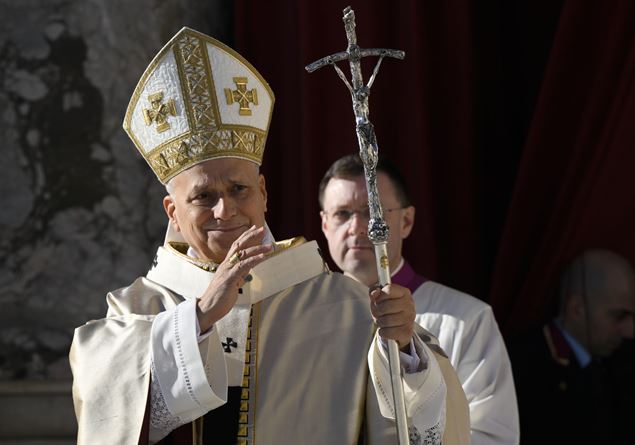In a few days – precisely Thursday 27 November – Pope Leo’s journey to Nicaea begins. A name (today it is called Iznik) which means little to most, but is full of memory for Christianity: it was in fact the seat of the first ecumenical council, way back in 325, exactly 1,700 years ago. An apostolic letter signed by Pope Leo In united faith. On the 1700th anniversary of the Council of Nicaea.
It is a fairly short document, in 12 points, but substantial and full of reflections on the historical, theological, spiritual and ecumenical meaning of the “Symbol of Faith” that Christians of every denomination – Catholic, Protestant, Orthodox – recite every Sunday during Mass. (See the summary page on the site) Some underlining will help to appreciate its value and to reflect on the substance of our Trinitarian faith, at the heart of which lies the confession of the divine sonship of Jesus Christ.
First of all, Pope Leo explains – briefly, but the narrative is important – the struggles of the historical period in which the Nicene Creed took shape: the persecutions that have just ended, the doctrine of Arius on Christ and the controversies that arise from it and their protagonists. They are important hints, which remind us that the confessed faith is not born at a table, but takes shape in the crucible of historical circumstances that bind people, even in suffering. Bishop Athanasius, the great “champion” of the faith formulated in Nicaea, suffered exile from the chair of Alexandria five times precisely for his defense of the faith.
A second noteworthy point is that the Nicene Creed does not at all represent a “Hellenization” of the Christian faith, resulting in a departure from New Testament formulations, a recurring accusation. It is true that some categories borrowed from Greek philosophy are used (the famous homoousios“of the same substance”), but their function is to explain what the New Testament states about Christ, therefore in fidelity to Sacred Scripture and Tradition (n. 5). It was a question of «defining the correct meaning of faith in Jesus as “the Son of God”», the heart of the Nicene confession of faith. However, it was Arius himself who Hellenized the Christian faith, whose theses were in line with the (philosophical) mentality widespread at the time. Pope Leo focuses at length on this “realism of the incarnation” and on the link of the Nicene profession of faith with the history of salvation between God and his creatures, underlining the distinctive characteristic of the Christian God: “His immensity is manifested in the fact that he makes himself small, he strips himself of his infinite majesty, making himself our neighbor in the little ones and the poor”.
It is also interesting that the document recalls the sensus fidei of the people of God, who understood where the truth lay. Saint Hilary of Poitiers, witness to the battles of Nicaea, recalls the orthodoxy of the laity, while many bishops were Arians, and recognizes that “the ears of the people are holier than the hearts of the priests”.
The Pontiff then recalls that the liturgy and Christian life are firmly anchored to the Creed of Nicea (and Constantinople): from the simple sign of the cross (“In the name of the Father and of the Son and of the Holy Spirit”) to the “Glory to the Father…” which concludes the Psalms in the Liturgy of the Hours. But he asks believers how these pass from the mouth to the heart, to life. With a series of questions, the Pope asks us to reflect on the “inner reception” of the Creed, on what what what we say means for our lives”. The Council of Nicaea “then invites us to an examination of conscience” on the question of God, which for many today is no longer relevant, also recalling the responsibility of Christians if “the question of God has almost no meaning in the lives of many” (n. 10). Further on it recalls that “we can testify to the mercy of God to people who doubt Him only when they experience his mercy through us”. In short, the words of faith commit life, passing through the concrete following of Christ.
Finally, Pope Leo recalls how the Nicene Creed represents a powerful “bond of unity between East and West”: it is the “common profession of faith of all Christian traditions”, between Orthodox, Catholics and Protestants. A fact that cannot be underestimated and which comes before any difference and division. We share with Christians of other confessions a heritage of faith recognized as binding and rich in content. From the Trinitarian Creed, Leo Unity in the Trinity, Trinity in unity, because unity without multiplicity is tyranny, multiplicity without unity is disintegration.” The “Trinitarian dynamic is not exclusive (either/or) but an “involving bond, an et-et”. Words of great weight to think about what model of unity and reconciliation is possible among all Christians. The challenge of unity, as well as theological, is spiritual: “it calls for repentance, conversion on the part of everyone”.
In short, a short but dense document, which invites everyone to become aware and delve deeper into what we recite every Sunday as a formula, which is instead the substance of our faith and of our life as Christians.


